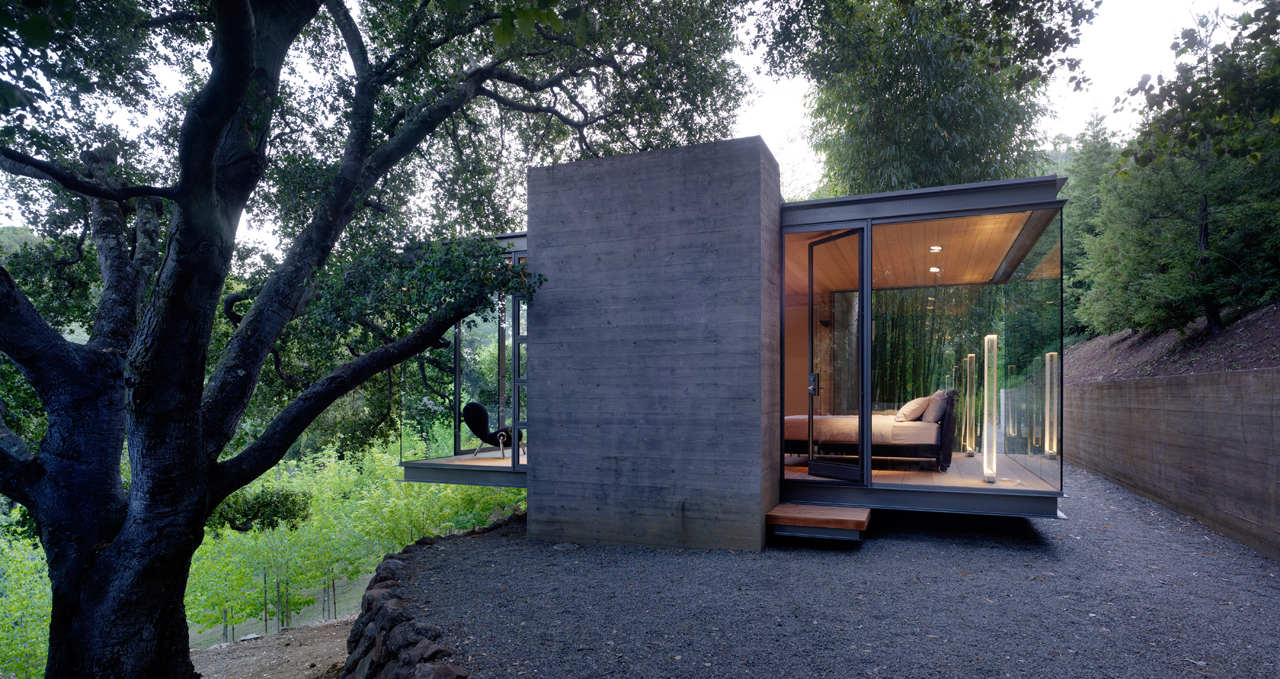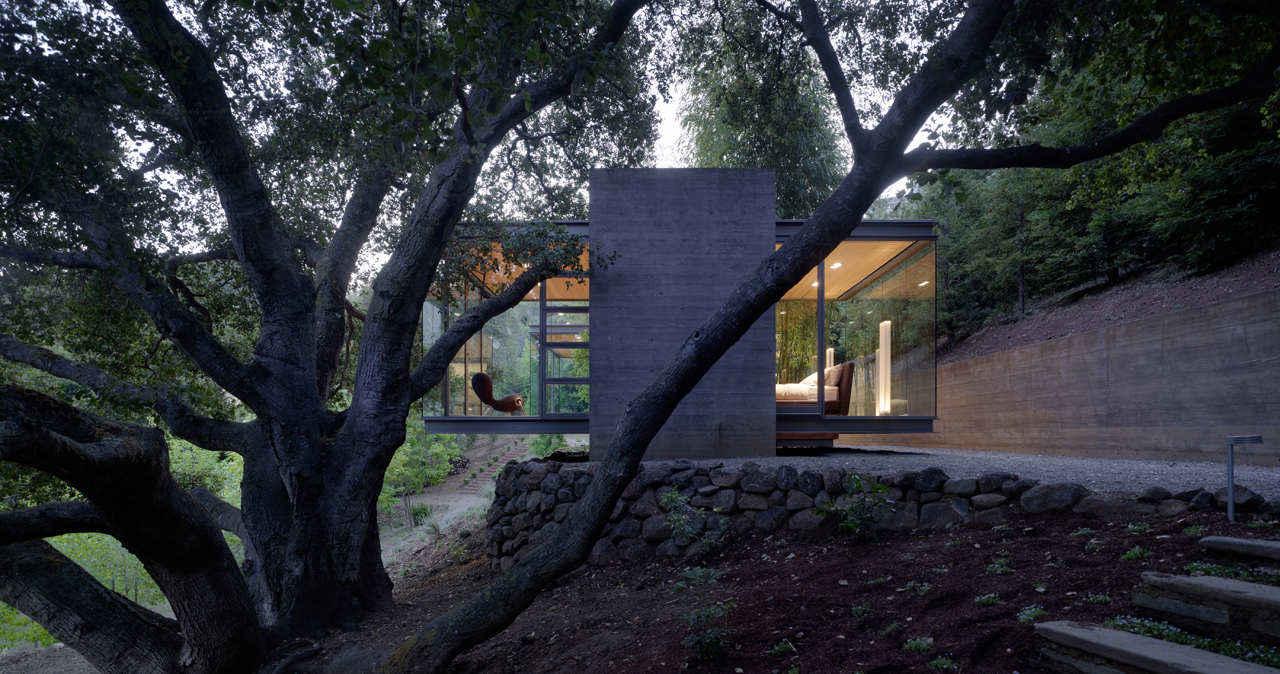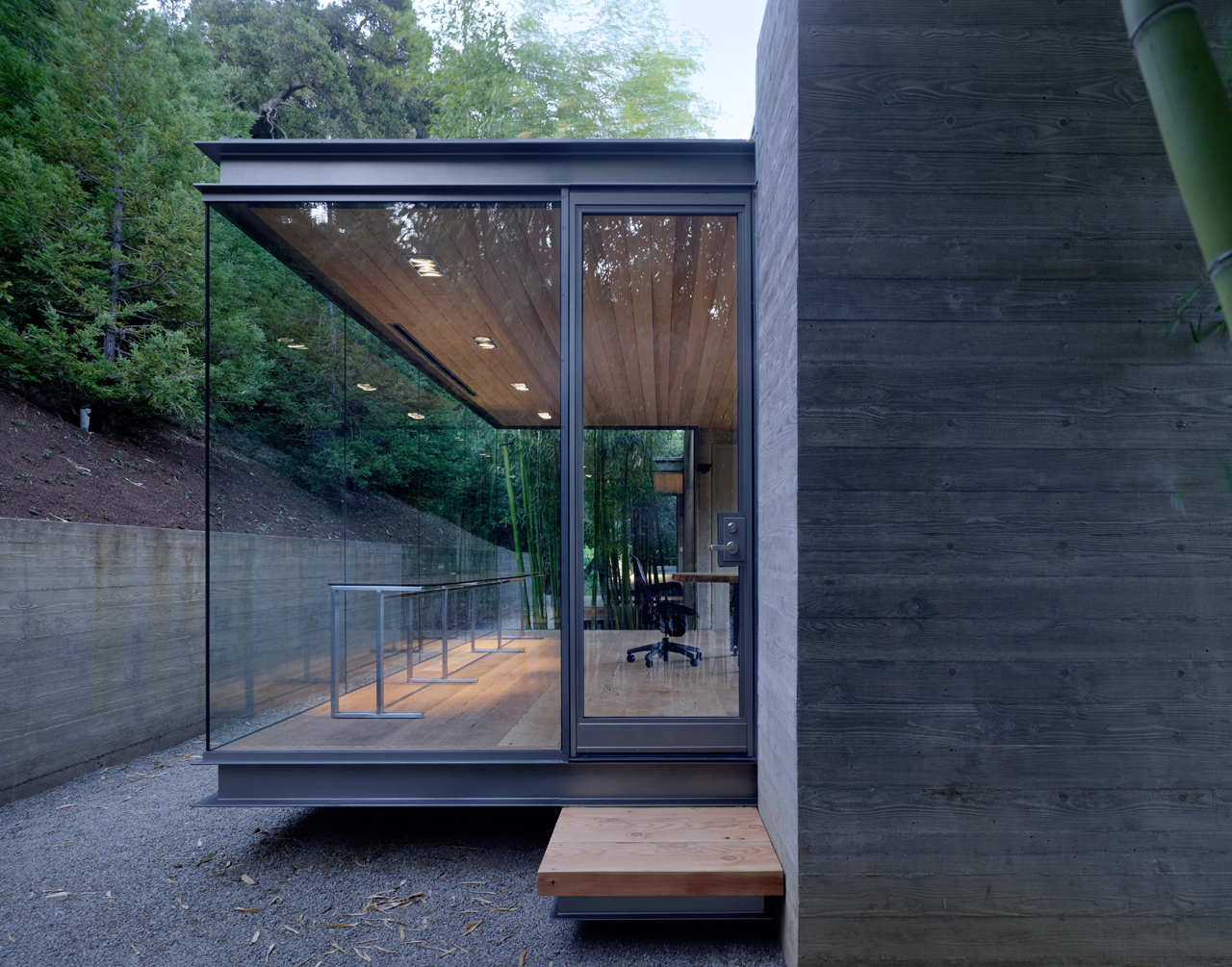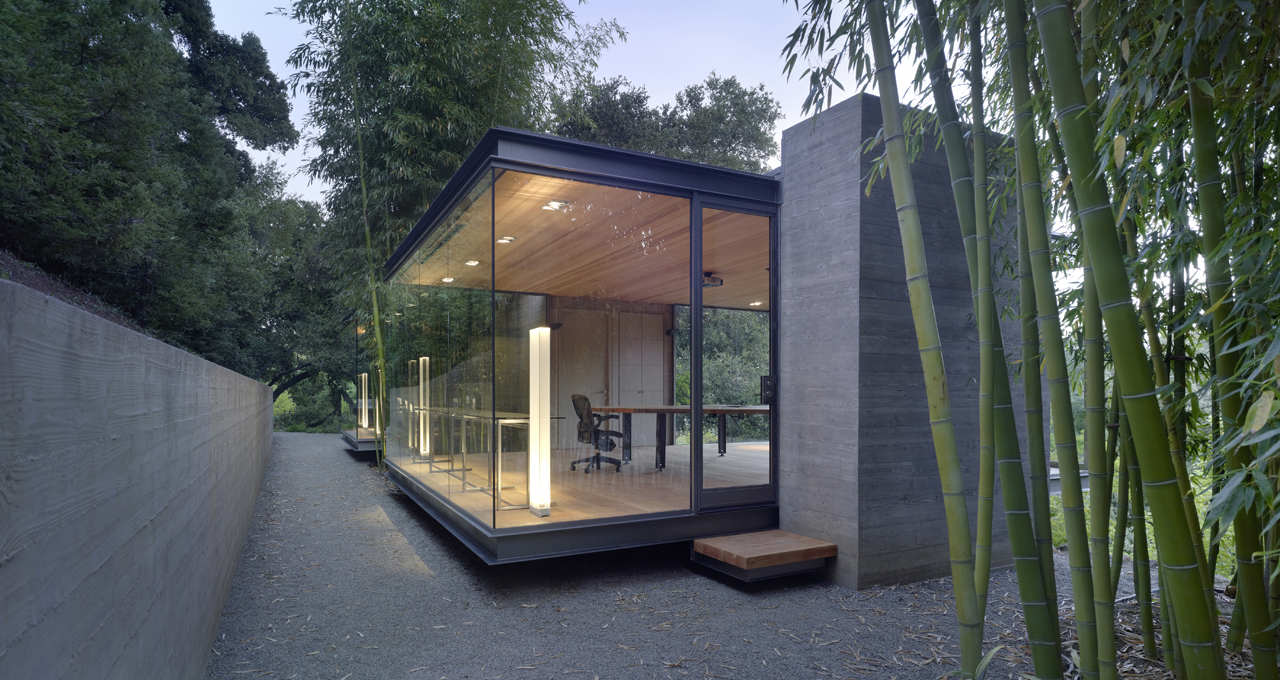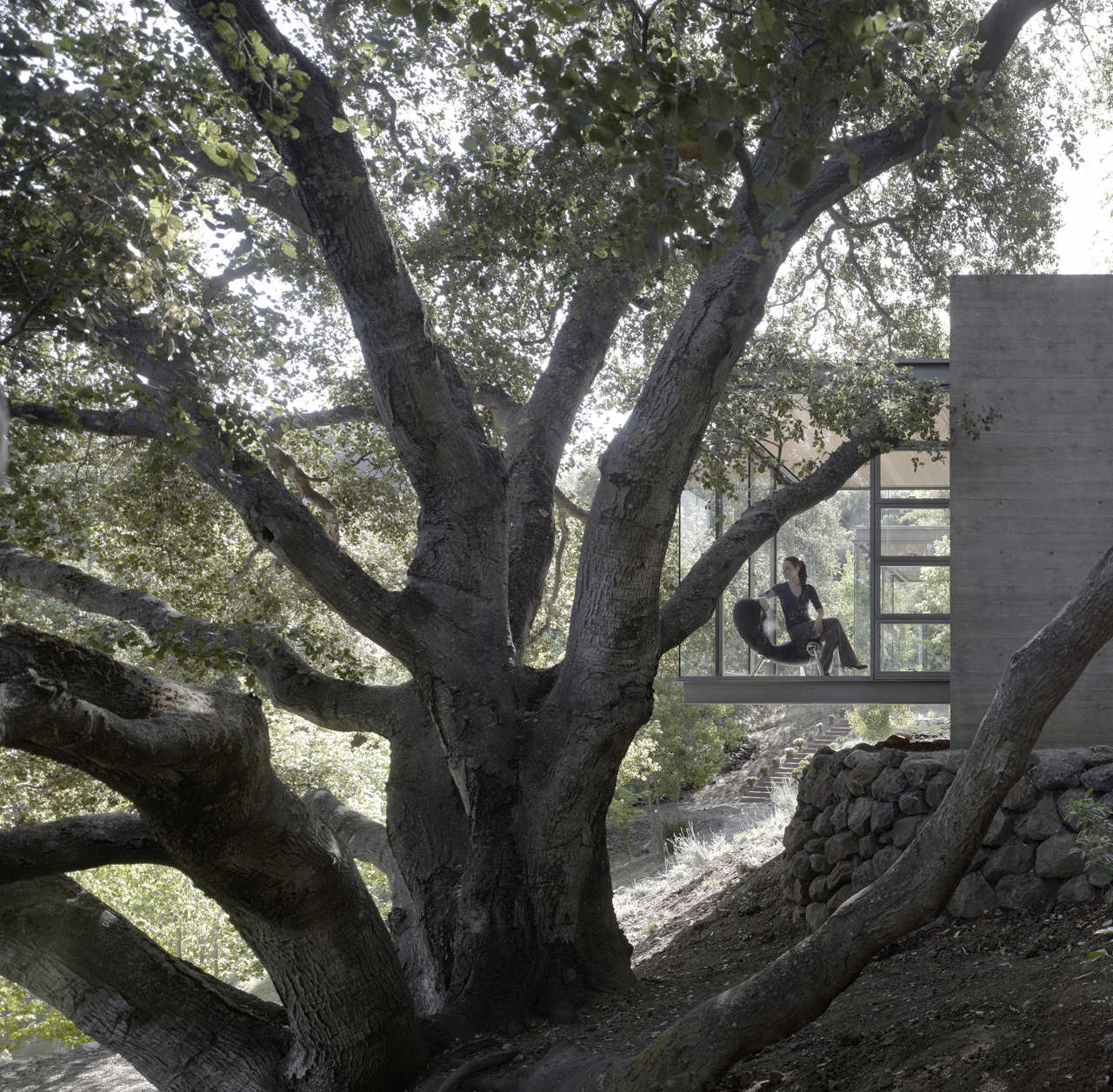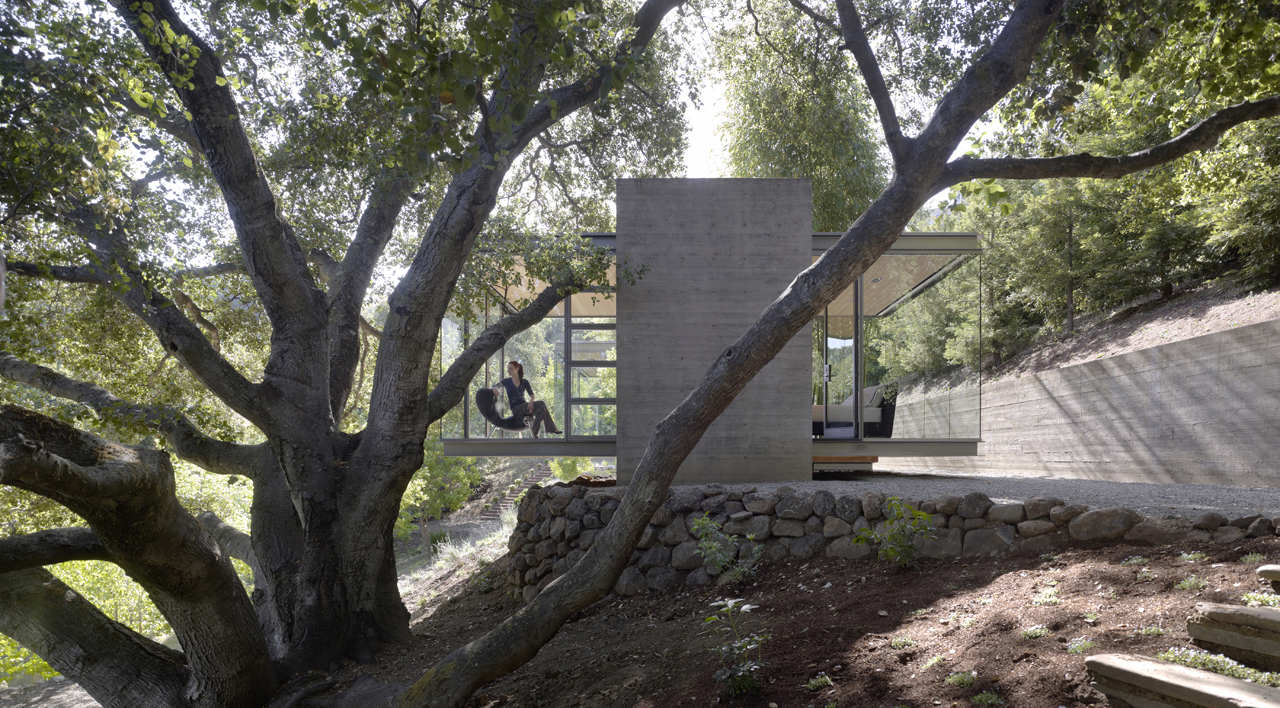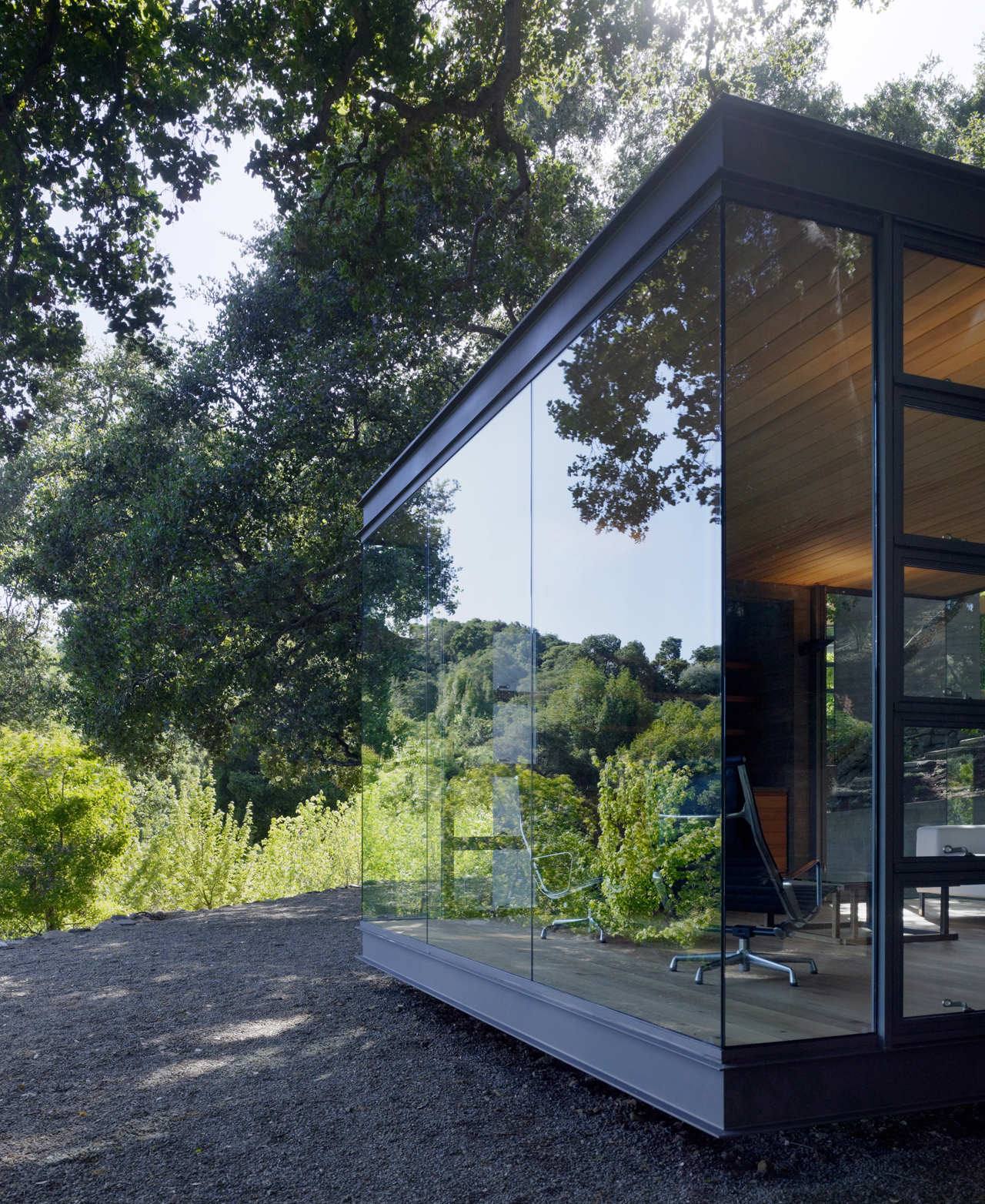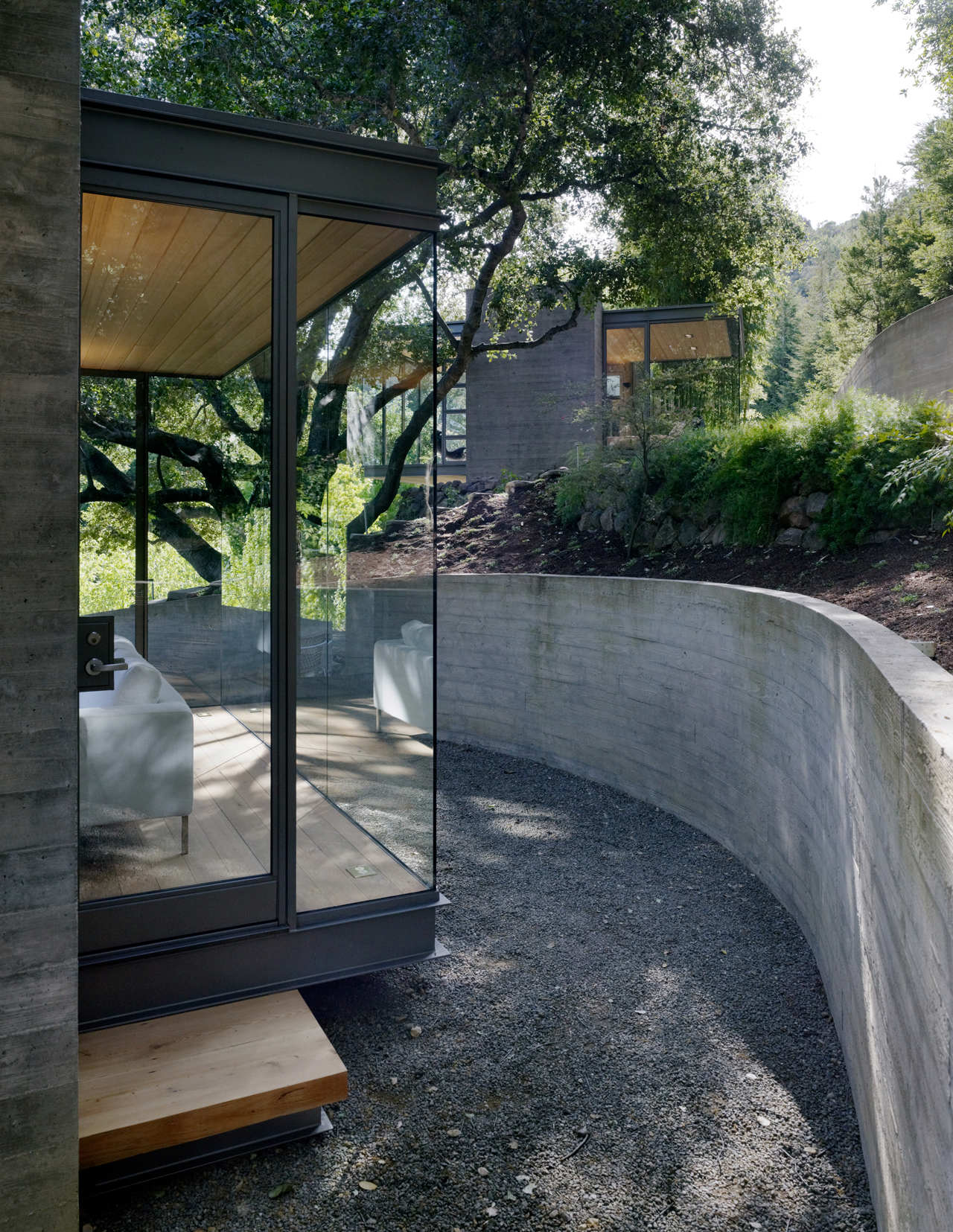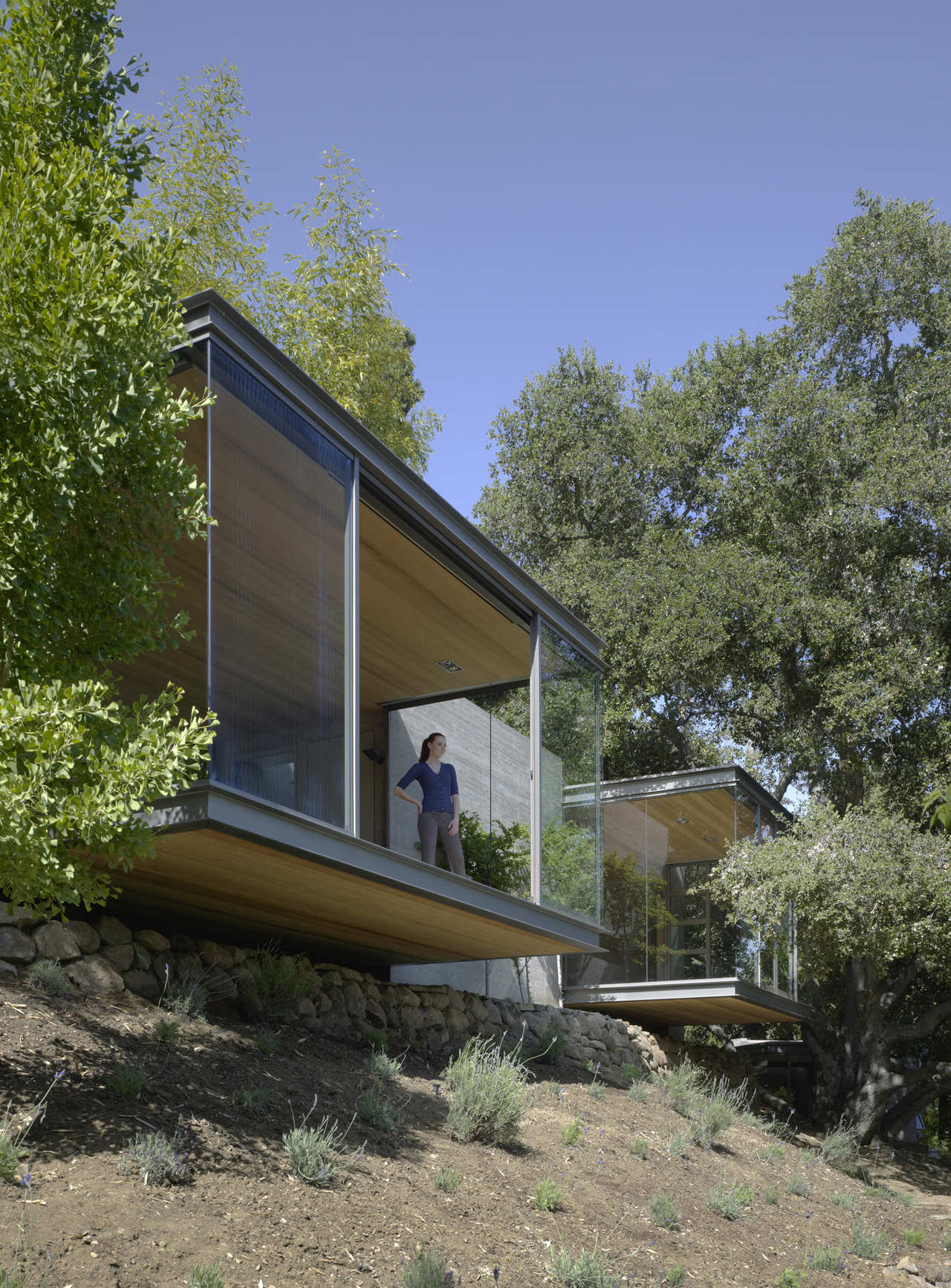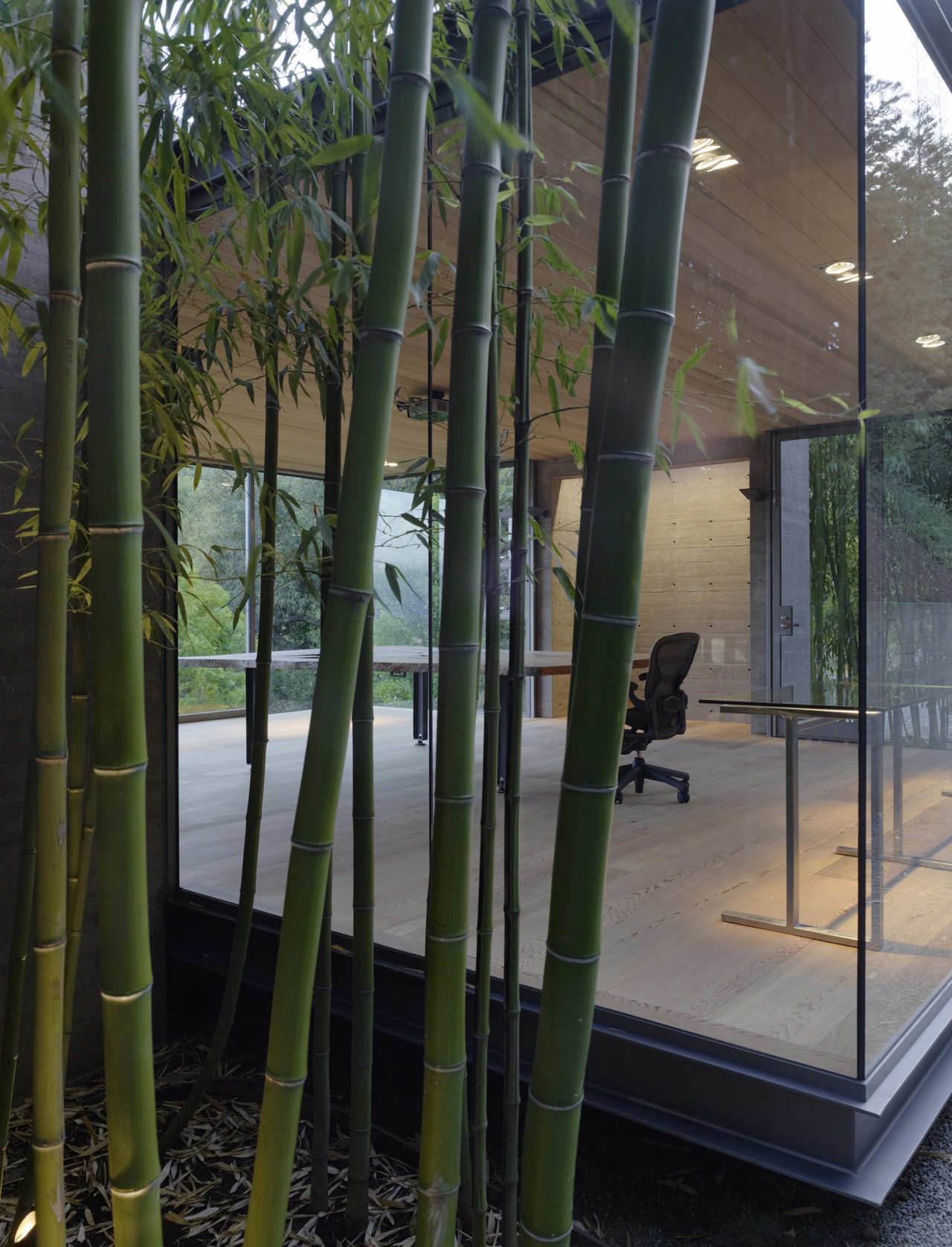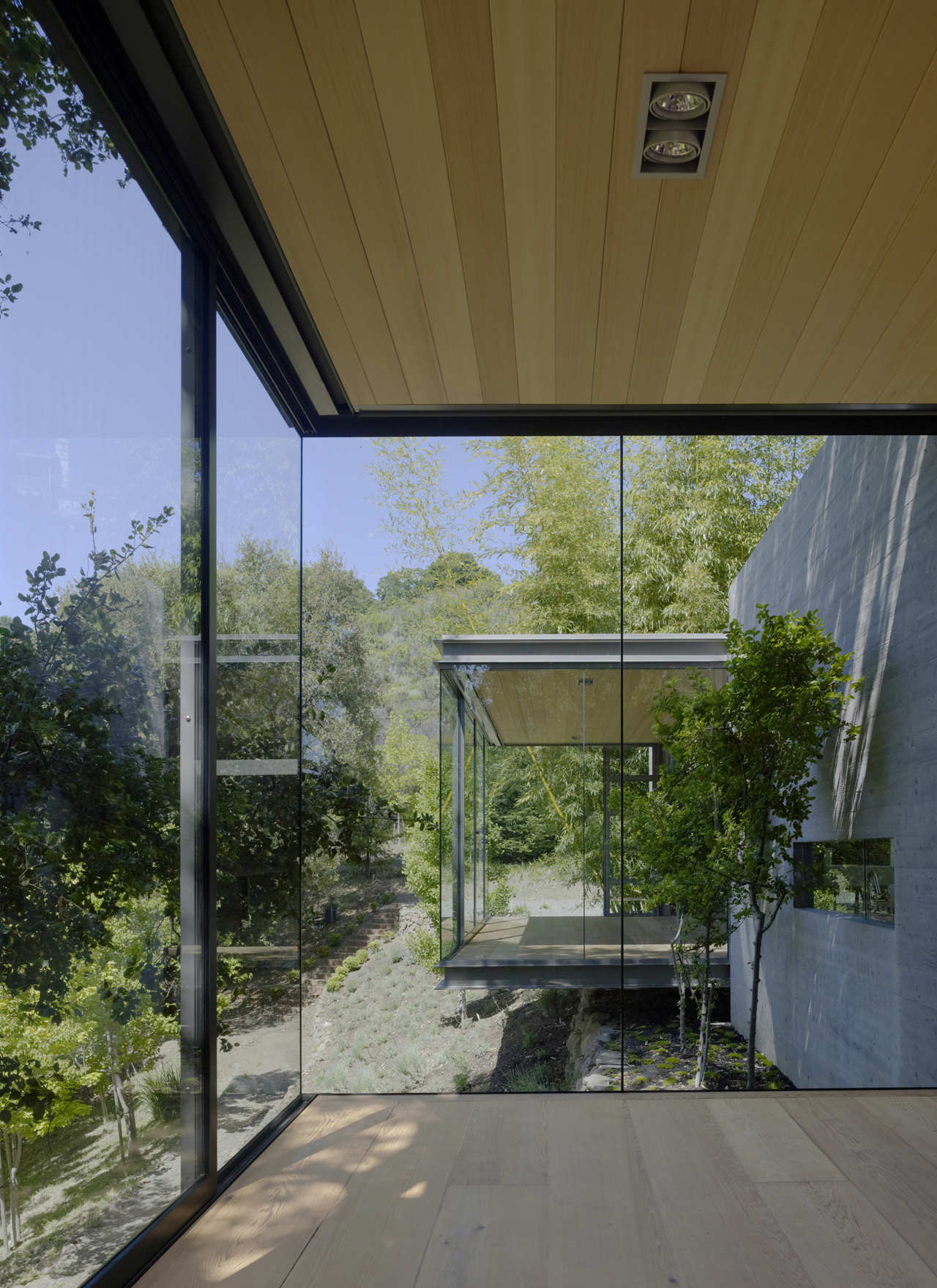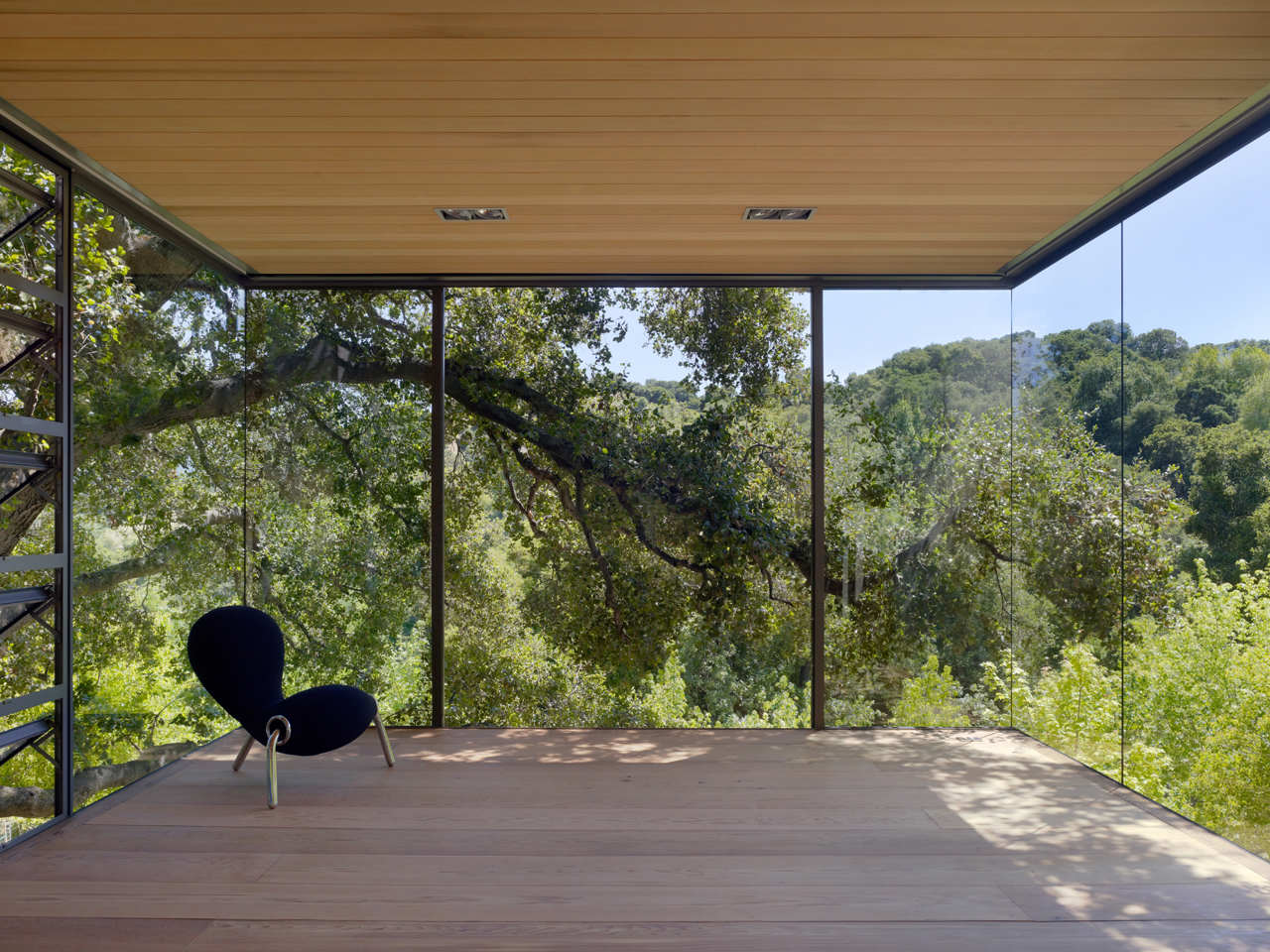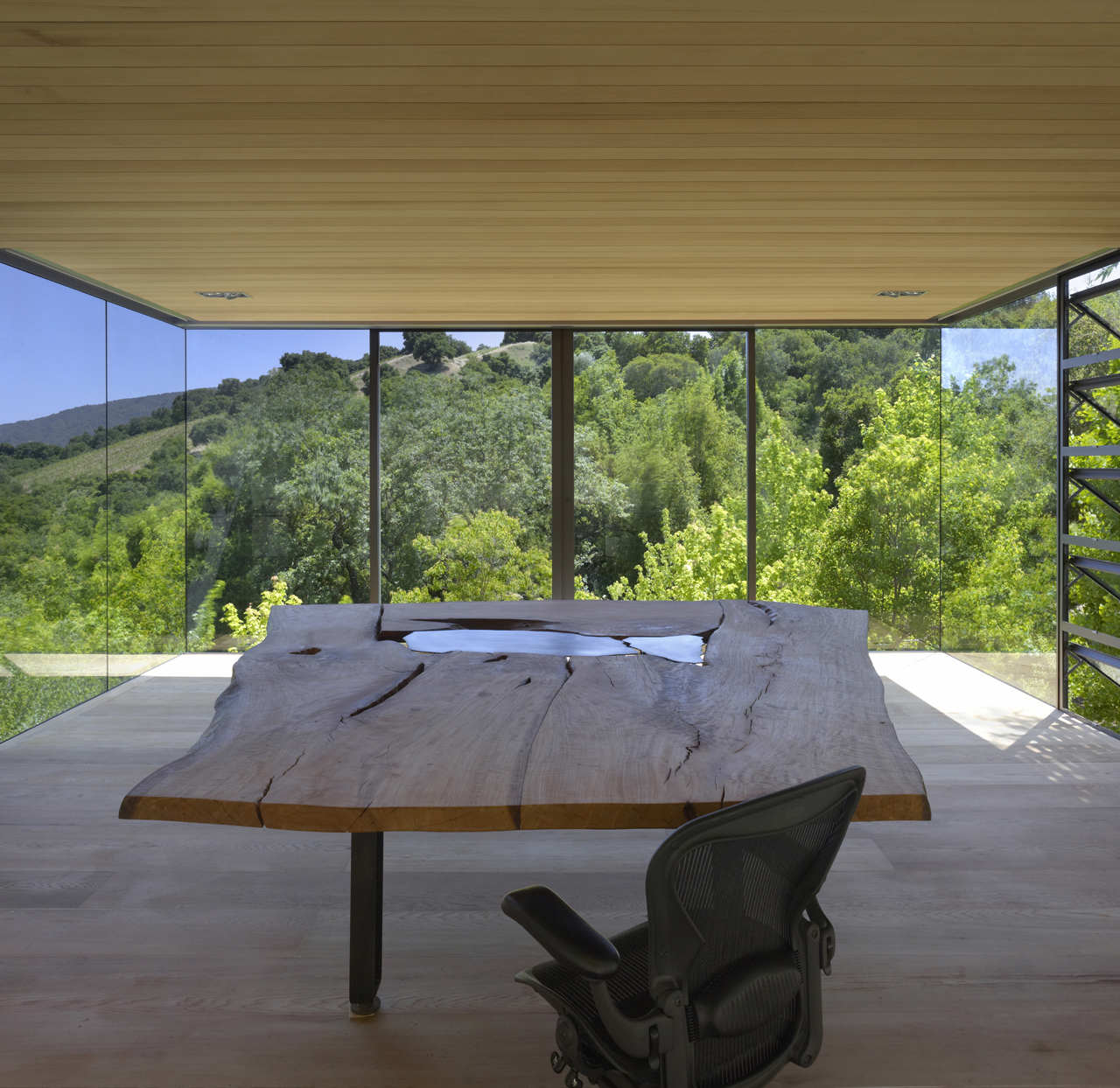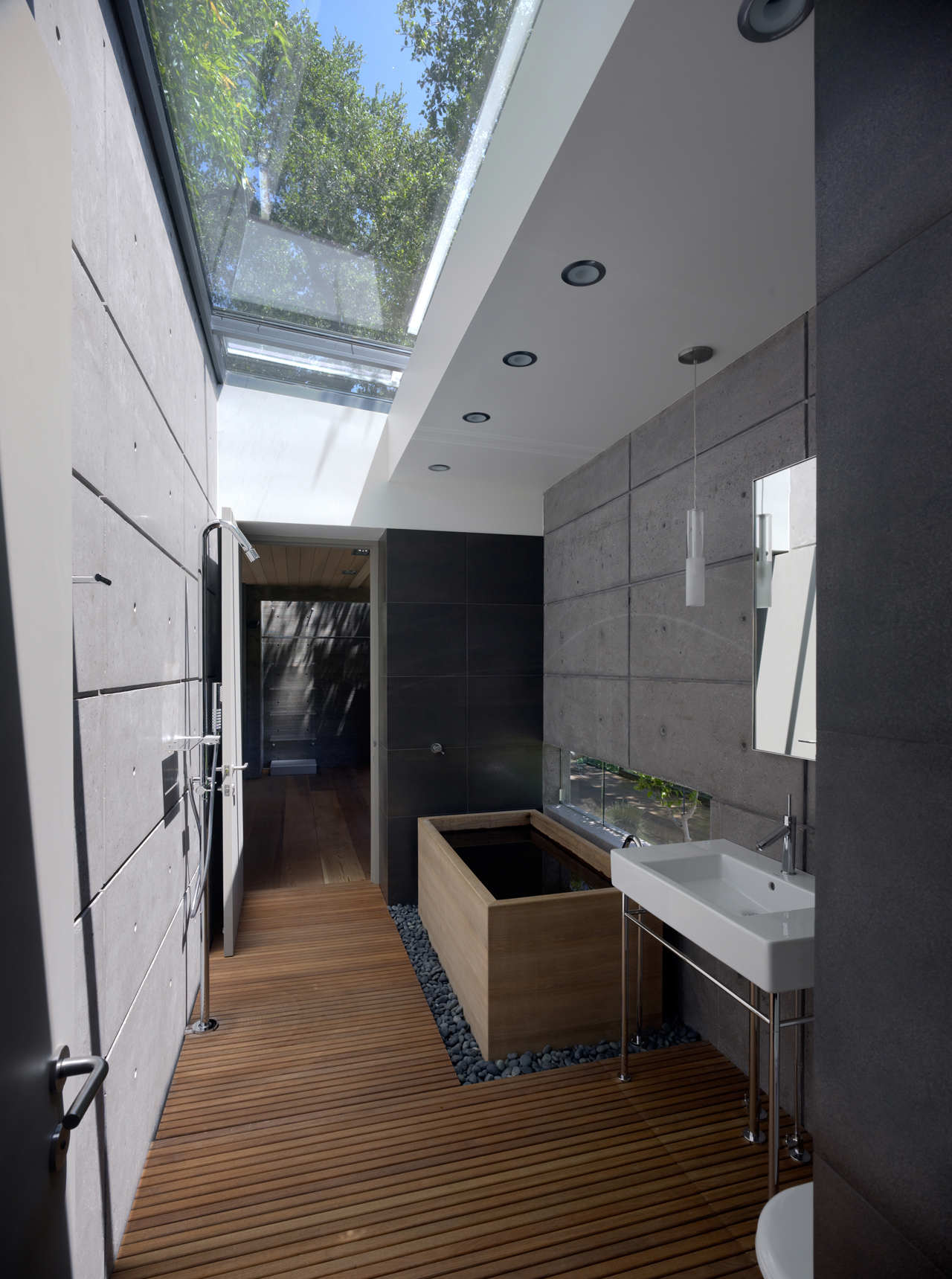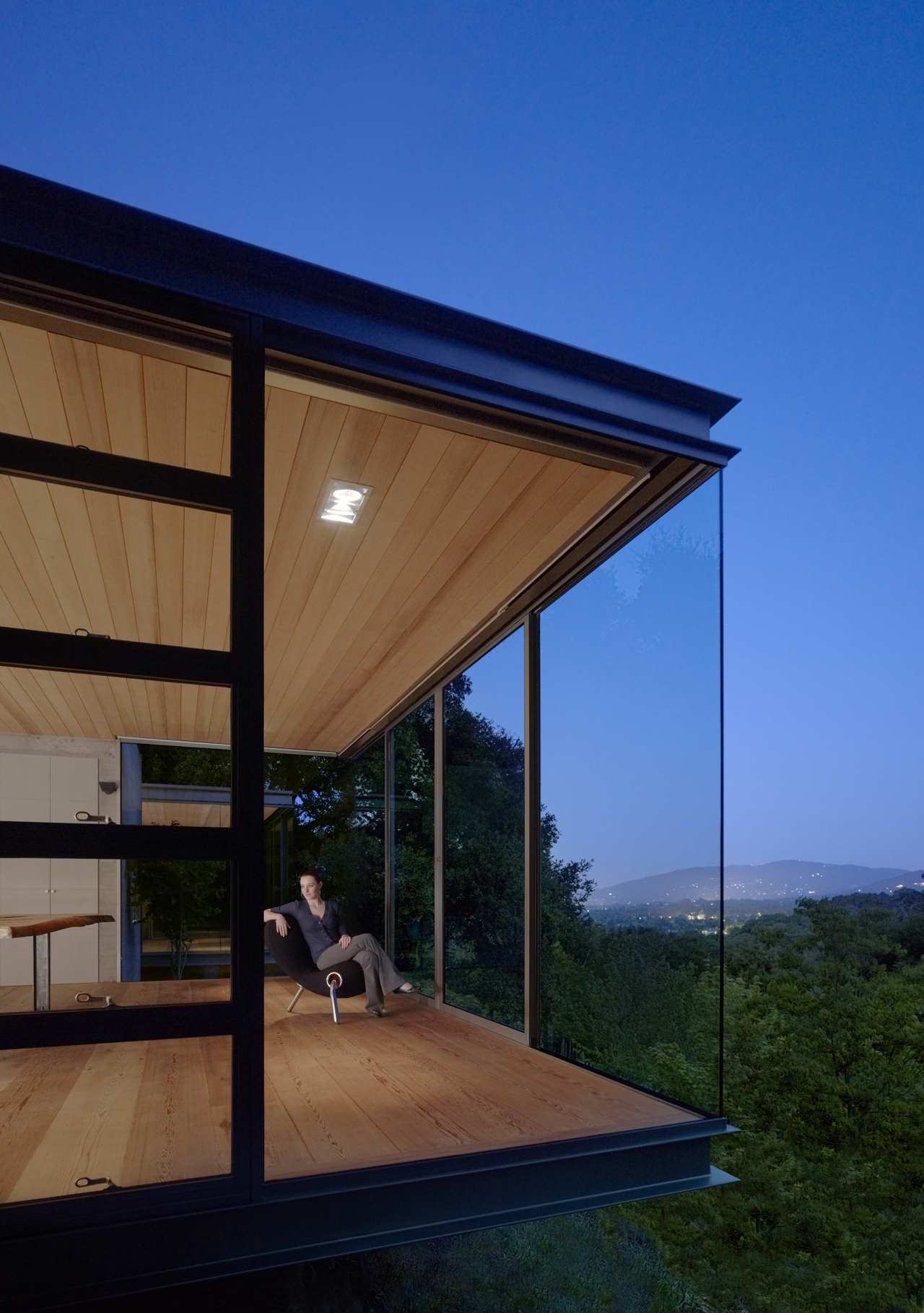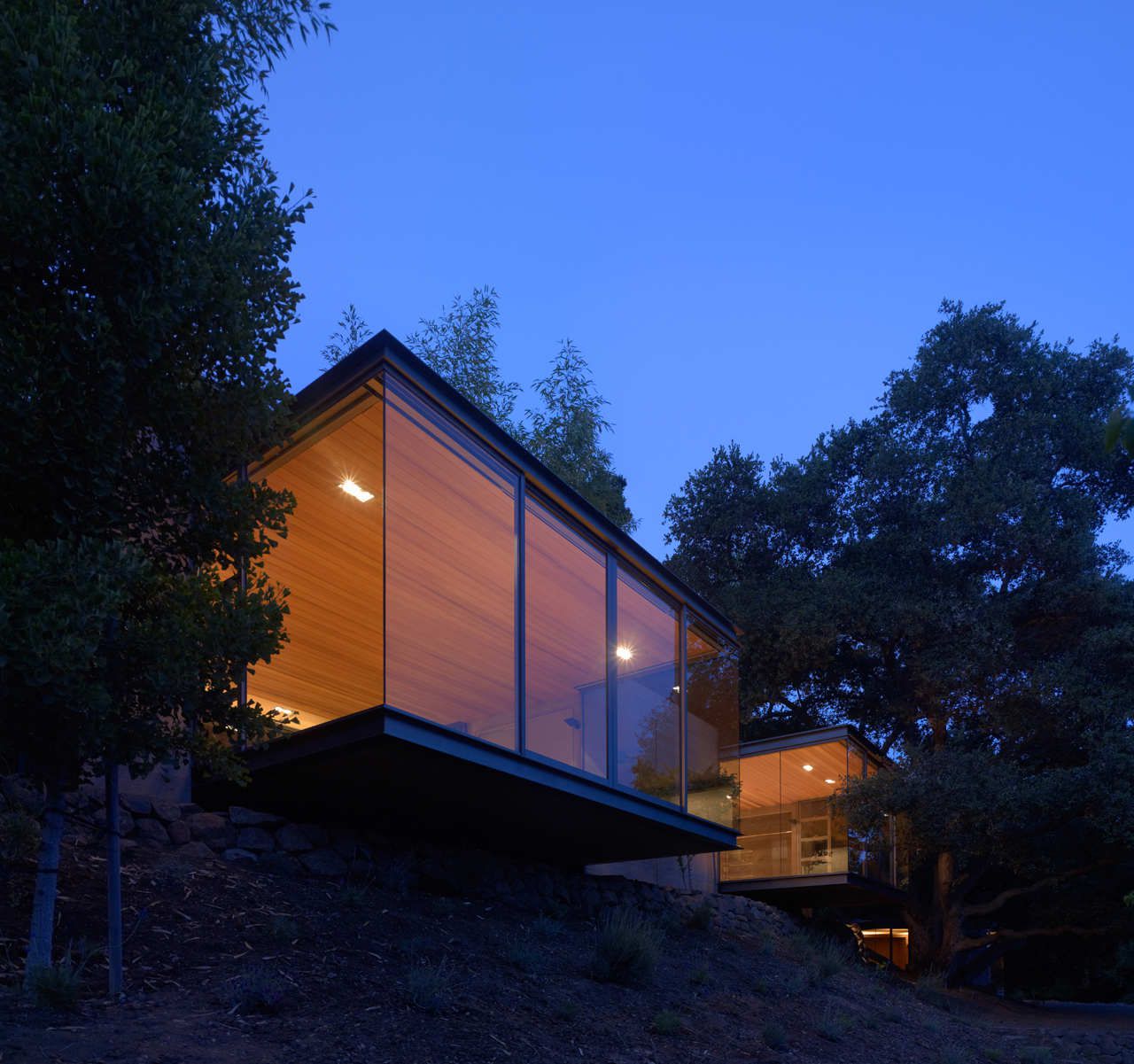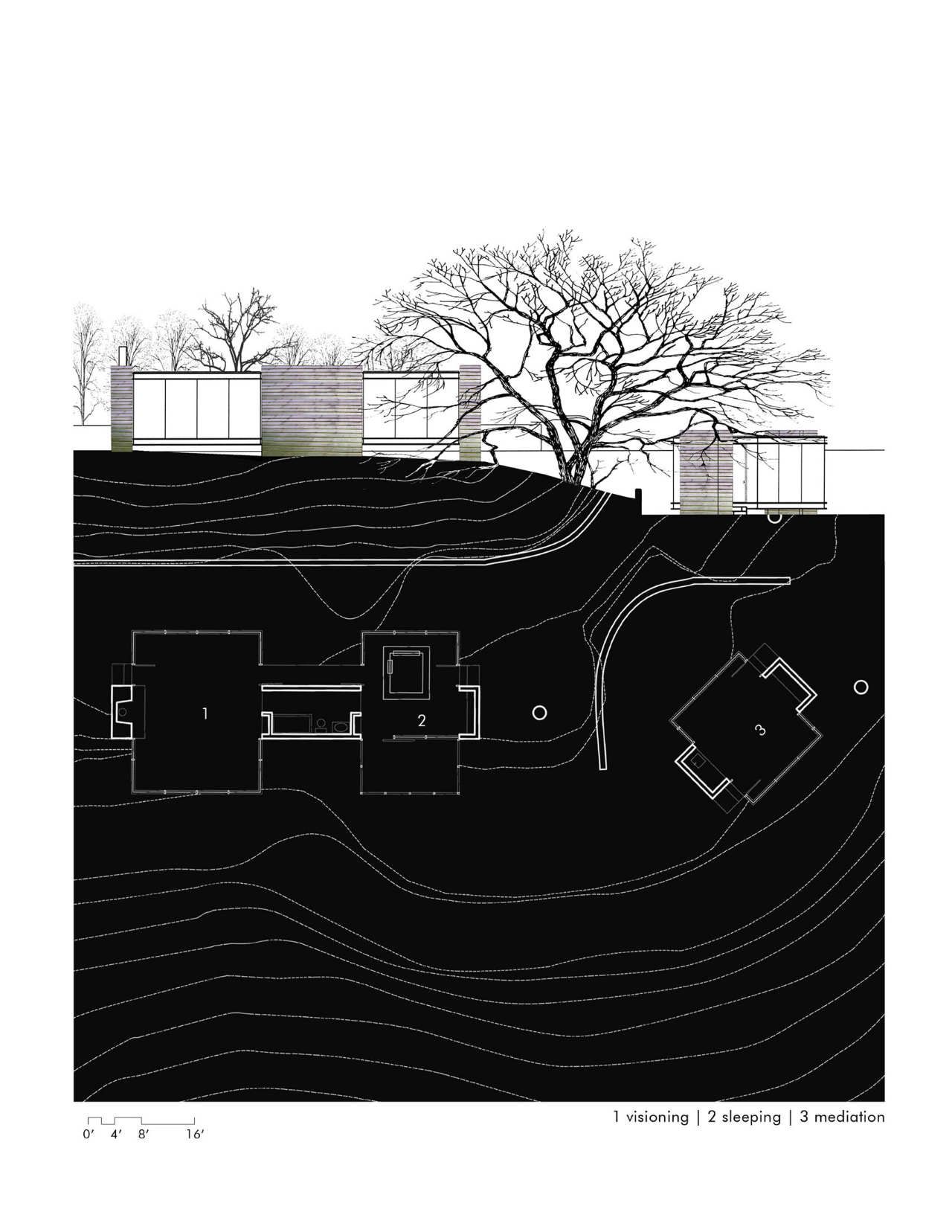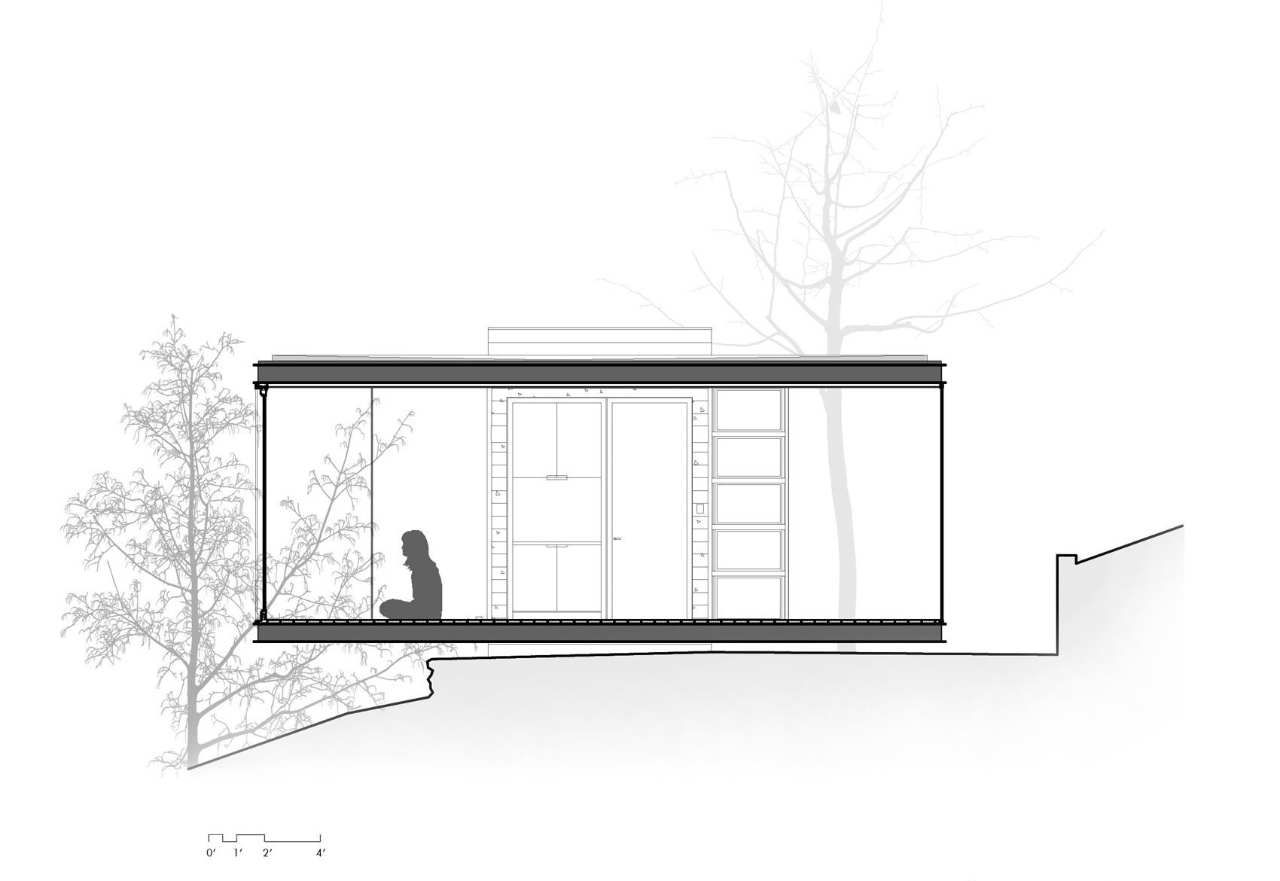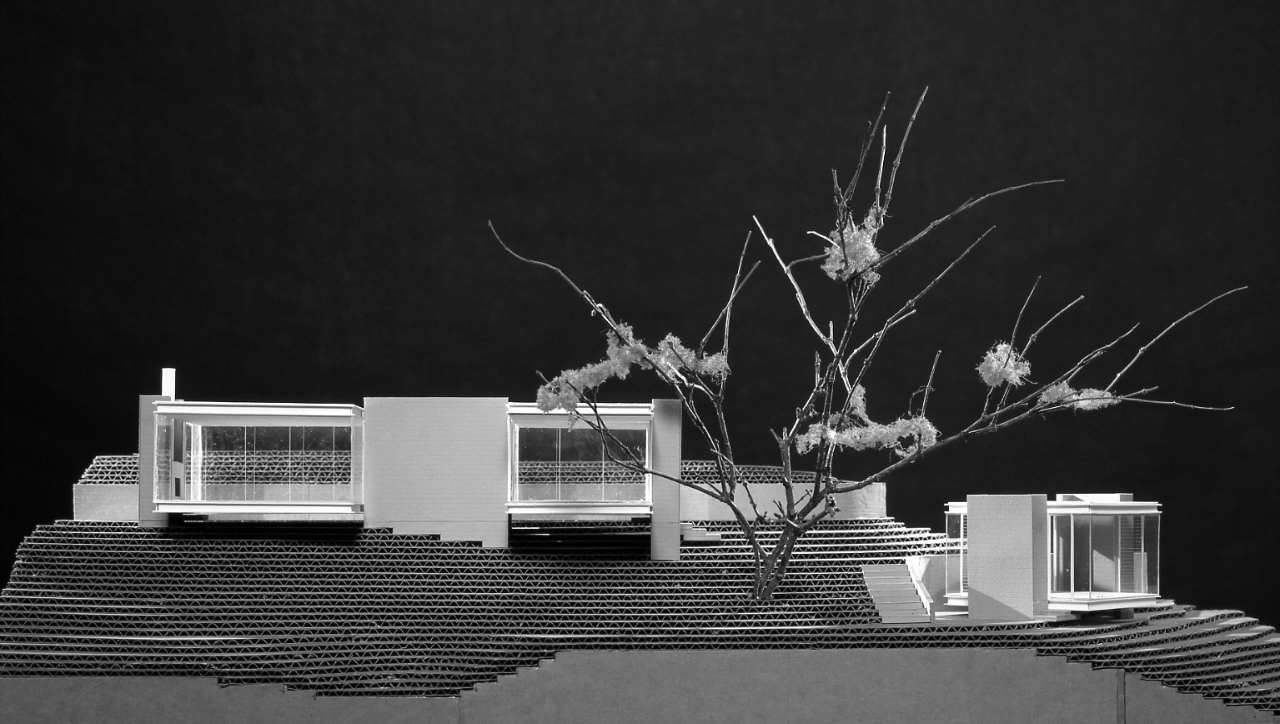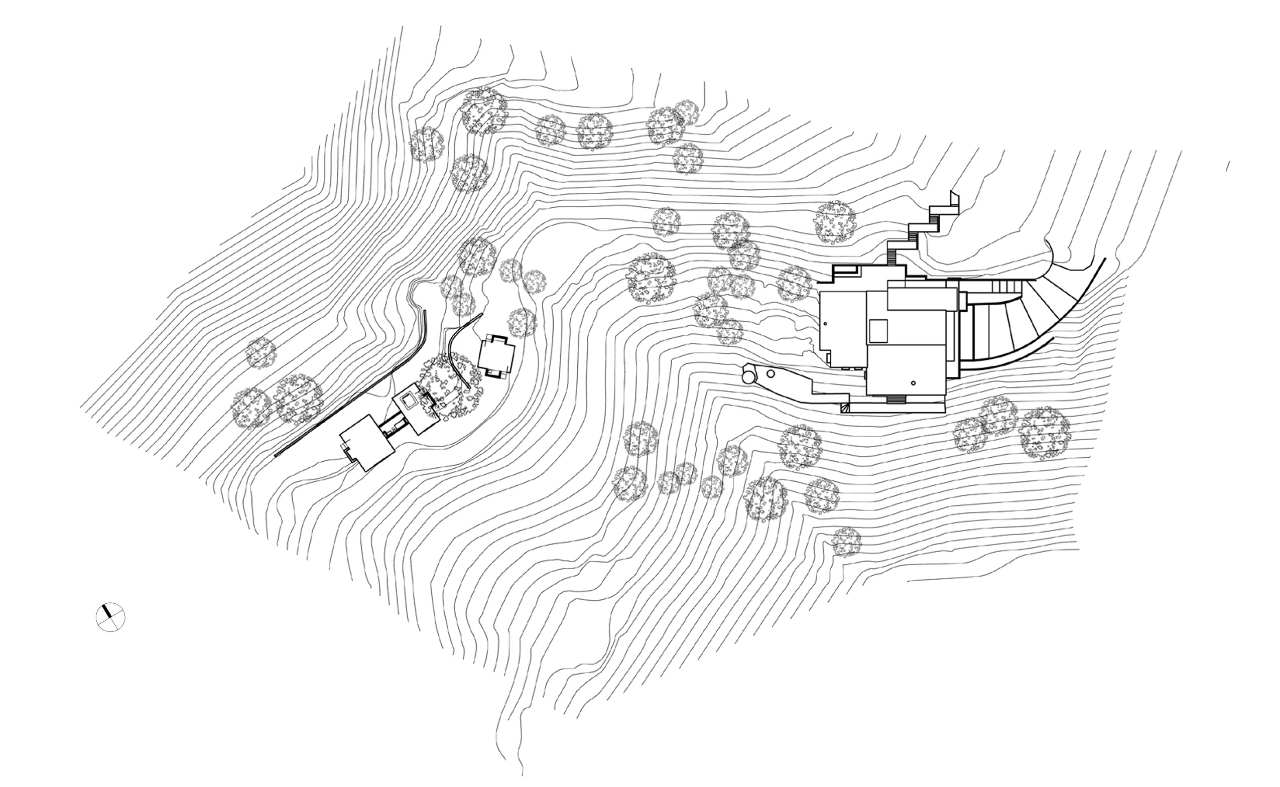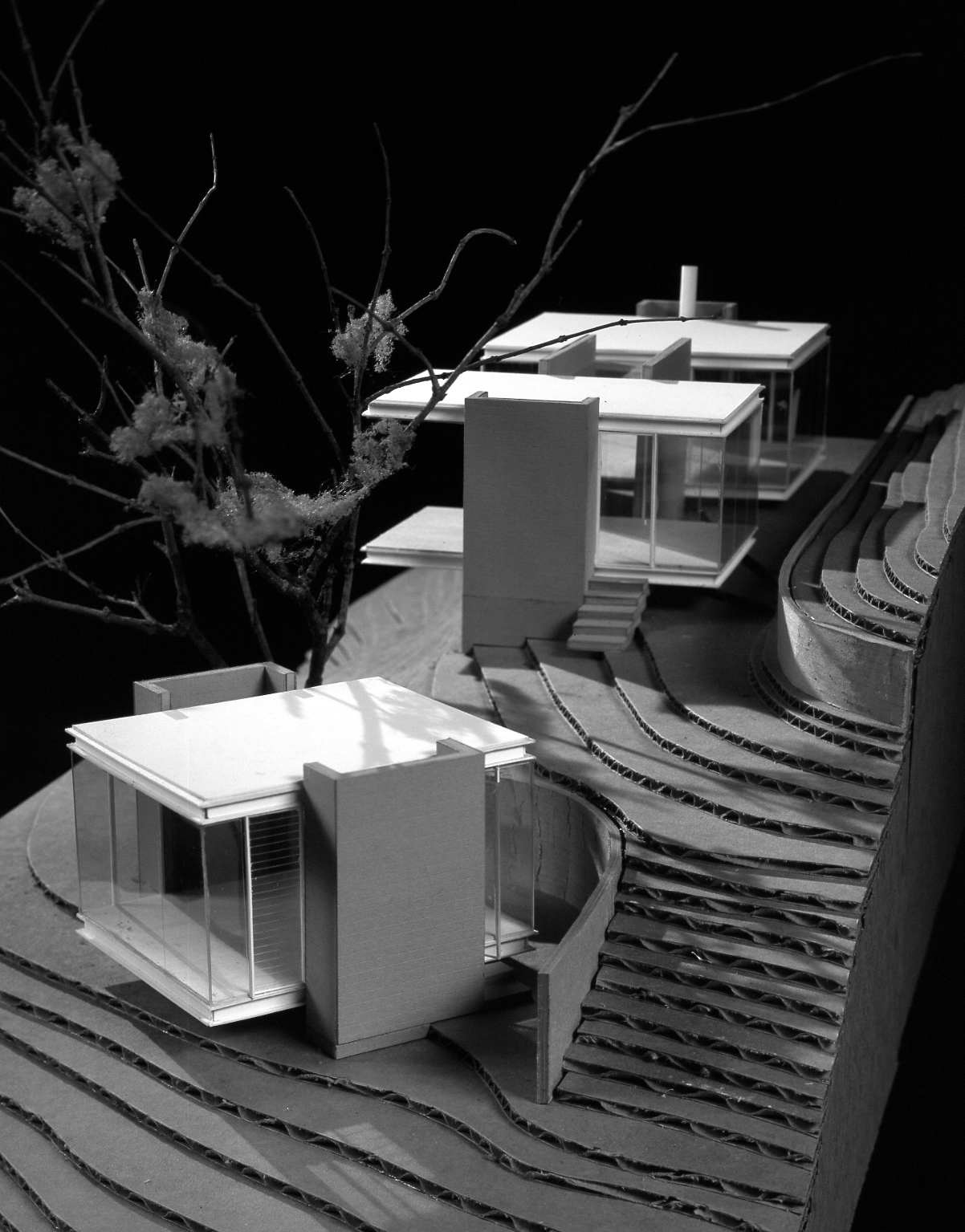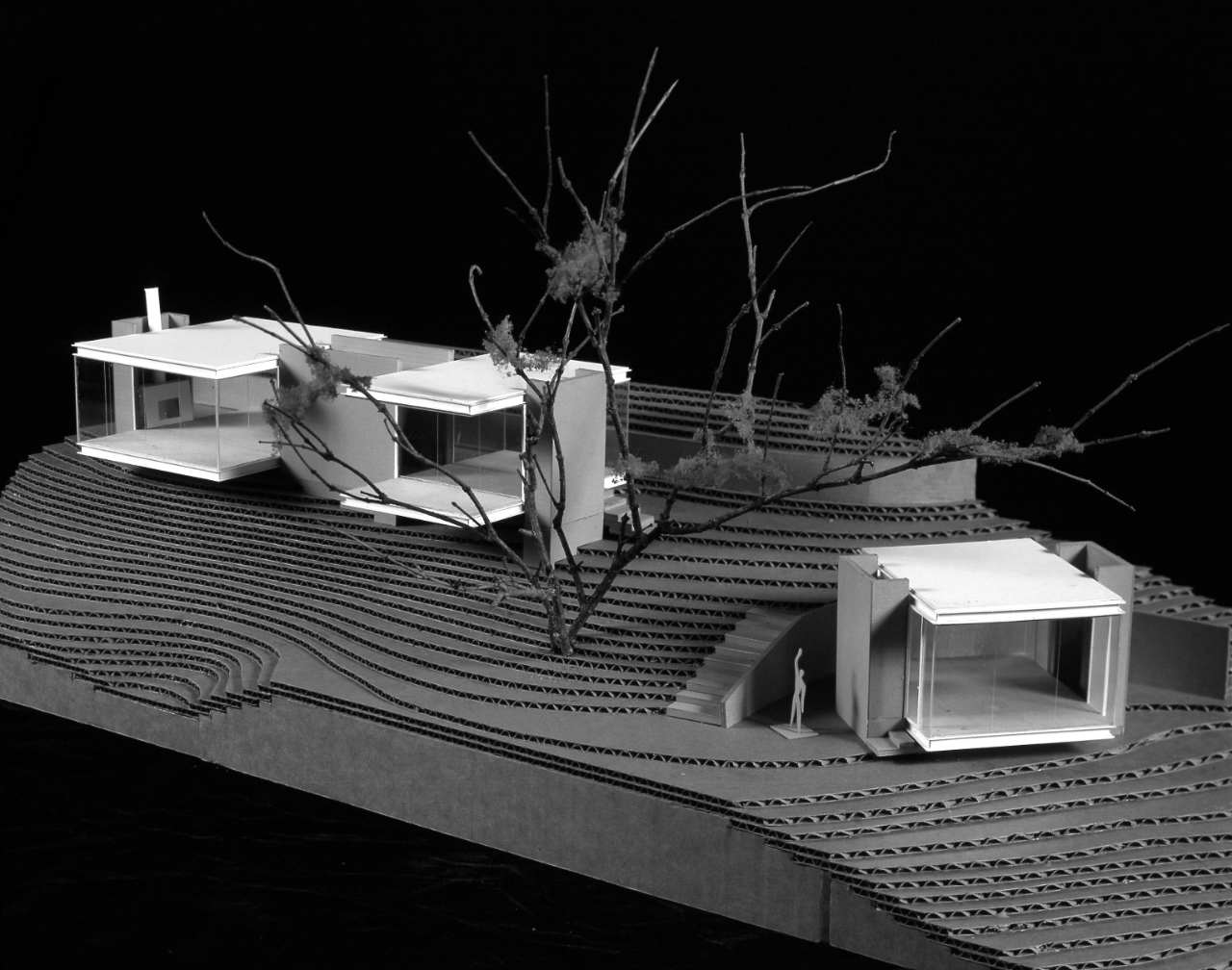Tea Houses by Swatt Miers Architects
Architects: Swatt Miers Architects
Location: Silicon Valley, California, USA
Year: 2009
Area: 270, 372 and 492 sqft
Photo courtesy: Tim Griffith
Description:
The thought for the tea houses started years back, when the proprietor and his young girl investigated the remote slopes encompassing their Silicon Valley home, finding a pure setting beneath an edge, under a woods of huge California Live Oak trees. At to start with, the family thought the setting would ideal for a tree house. A long time later, after the 6000 square foot primary house was broadly redesigned, the vision was acknowledged as three individual tea houses, places where one could just withdraw into nature.
Every tea house is composed as a straightforward steel and glass structure, floating like a lamp over the regular scene. Cast set up solid center components grapple the structures, supporting steel channel edge joists, which cantilever past the centers to bolster the floor and rooftop planes. With its insignificant foot shaped impression, the configuration treads gently on the area, minimizing reviewing and protecting the fragile root frameworks of the local oaks.
The three tea houses shift in size, each with its own special reason. The 270 square foot “reflection” tea house, settled under the shelter of the biggest oak tree, is a spot for individual consideration. The somewhat bigger “dozing” tea house, roughly 372 square feet, is a spot intended for overnight remains. This structure is joined by a sky-lit lavatory center, which extensions to the biggest tea house. At 492 square feet, the “visioning” tea house is for private social affairs and imaginative considering. The idea of ‘calm effortlessness’ is a steady topic all through – there are no telephones, TVs or sound frameworks inside of these structures.
The configuration accentuates maintainability. Steel surrounded entryways and shade windows give access and high – low ventilation, while uniquely adjusted aluminum encircled sliding entryways, with custom steel interlockers and settled glass boards, mitered at the corners, break down the obstruction in the middle of inside and outside. Common shading so as to cool is improved from deliberately put finishing, including evergreen redwood trees and bamboo, and deciduous maple and gingko trees. Warming is given by a brilliant hydronic framework beneath the ground surface. Power is created nearby by a photovoltaic cluster mounted on the top of the principle house.
The insides are executed with a straightforward palette of differentiating materials – freshly point by point steel and glass, and then some “natural” unfinished solid, board shaped and wire brushed to uncover the wood grain, and cedar sheets, reused from the redesigning of the primary house.
As the daylight and shadows move over the slope the tea houses tackle distinctive structures – at dawn, the structures vanish into the long shadows; the delicate outline of the late morning sun throws emotional reflections off the glass; and by night, the structures gleam like lamps in a greenery enclosure. Seen from a far distance or saw from inside of, the tea houses show up at one with their locales, inseparably joined with the local California landscape.
Thank you for reading this article!



